One of the hard parts about going camping in a travel trailer is choosing the right rig to tow your trailer and, honestly, choosing the right trailer for your rig. Well, if you’ve been looking into camping, someone has concocted a pretty awesome combination. Up for grabs in America right now is a weird 2002 Tabbert Baronesse 740 Caravan from Germany, and it comes with a minty fresh 1995 Cadillac Fleetwood Brougham. What a wild pairing, and the camper part of the equation might even be the most interesting part. But pump the brakes before you get excited.
There are some pretty big differences between European and American campers. Yes, one of those differences is that Europeans call their campers “caravans,” but it goes way deeper than that. One big difference, and this is something that you might have noticed already, is that axle placement is very different. Here in America, we like to load our trailers down so that 10 percent to 15 percent of the total trailer weight is on the tongue. Typical tongue weight percentages in Europe are about half of what American trailers are, and a lot of that has to do with the more centrally-located axles that European trailers have.
The general practical difference here is that Europeans can tow big trailers with small-ish cars, but they also tow campers at slow speeds for safety. Americans can tow huge trailers at fast speeds, but require bigger vehicles to do the job safely.

Thus, what you’re looking at here is an interesting interpretation. The Tabbert Baronesse 740 Caravan is a German camper that wasn’t made for the American market, but it’s being towed by one of the coolest American Cadillacs of the 1990s, which is armed with 5.7-liter GM LT1 V8 power.
Tabbert
The camper portion here comes from the famous German brand of caravans, Tabbert. The company offers a nice history speed-run:
1908
By the time Henry Ford started producing the legendary T-model, which was the top-selling car in the world until 1972, Alfred Tabbert was born.1923-27
The whole world is crazy about mobility – and so is Alfred Tabbert. Thus he learned the trade of car body manufacturing at the Siemens-Automobilwerken in Berlin, where he also passed his examination for the master’s certificate.1934
Only a few years after his graduation, Alfred Tabbert founded his first own company in Schweinfurt: “Karosseriebau Alfred Tabbert”.1946
As the company was destroyed by a bombing raid, Alfred Tabbert had to start anew. Together with approximately 80 employees nearly 12 pushcarts and agricultural platform lorries were produced every day. In 1948 a conflagration blasted the factory and valuable stocks. Hence, Alfred Tabbert took the chance and founded a new company “Fränkische Fahrzeug- und Möbelwerke”, comprising of 120 employees and a new production hall for single axle trailers and furniture.
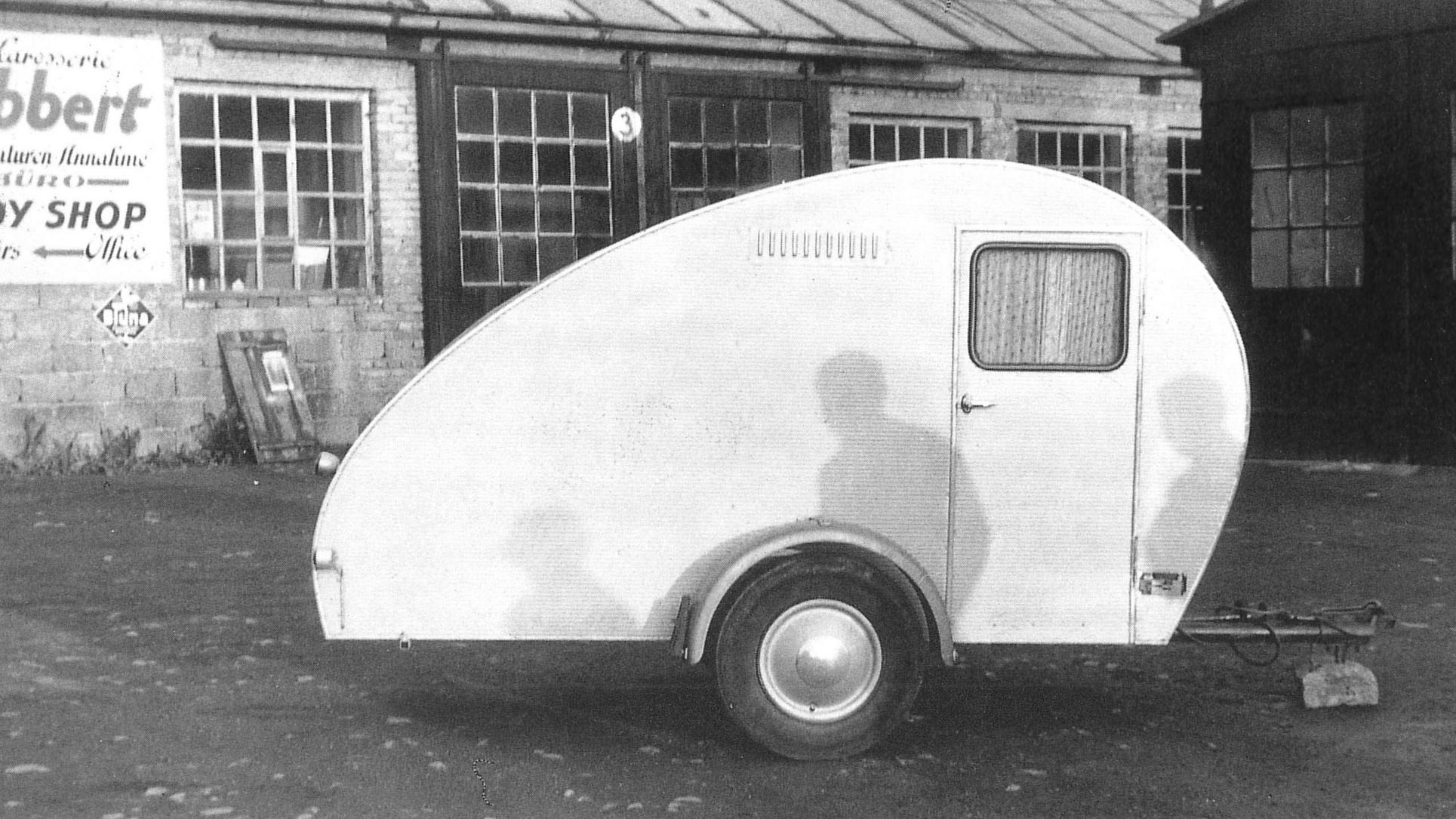
1953
At the age of 45 caravanning pioneer Alfred Tabbert produced his first caravans with 120 employees. Only two years later the first Ideal caravan is produced in series. The first production series of caravans was started only a few years later, followed by the first awning in the early 60ties.
Sadly, I have not found much on the origins of the Baronesse. From what I could find, the trailers rose to popularity in the early 1970s as Tabbert’s flagship line of caravans. What made the Baronesse stand out was the fact that it was custom-ordered to the exacting specifications of the buyer. Apparently, this made them quite popular among wealthy Romani traveling communities.
Here in America, Tabbert is perhaps most famous for its T@b series of teardrop campers, which are built by nuCamp.
This Tabbert Baronesse 740
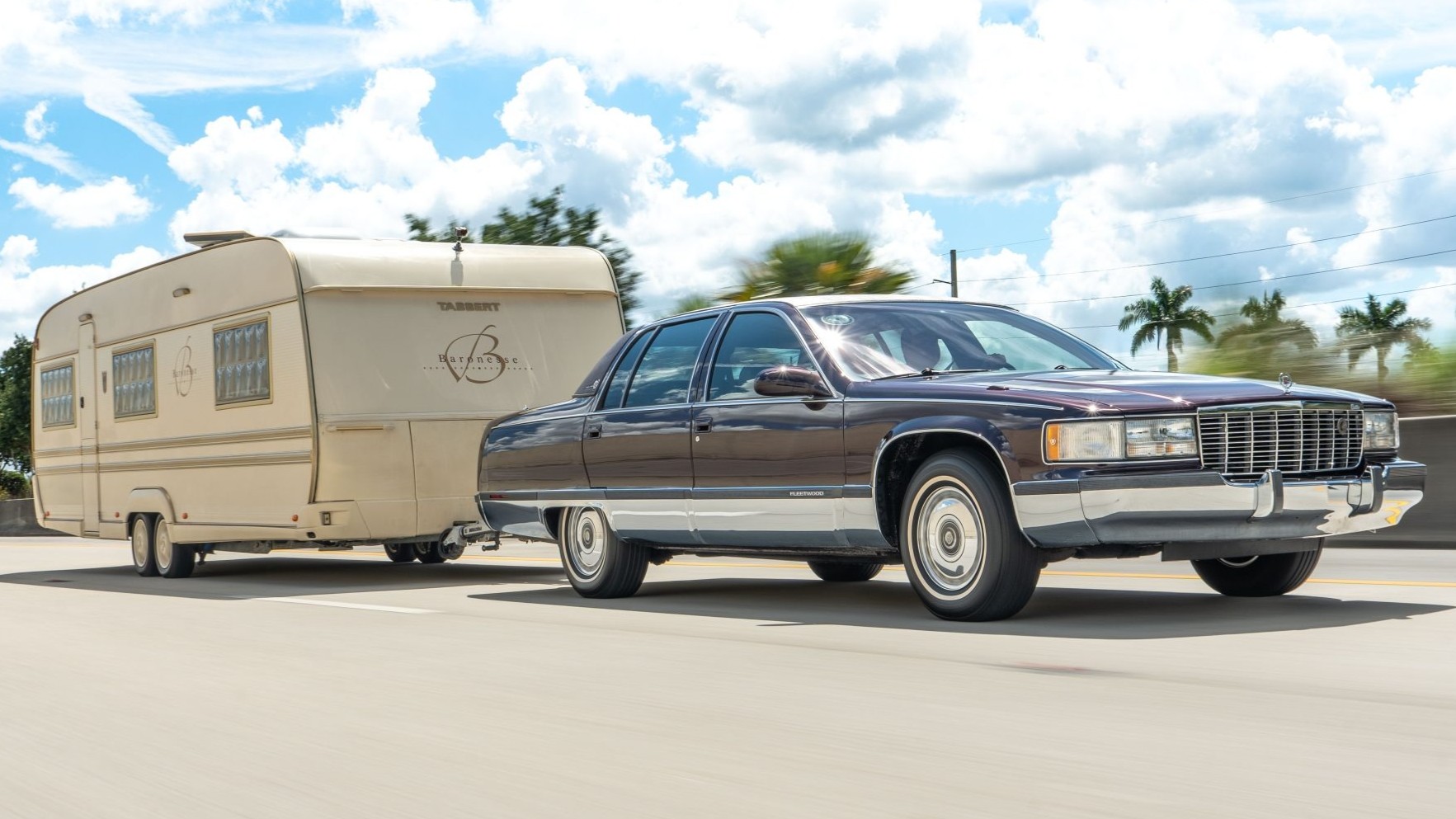
Anyway, the previous owner of this camper, a Romani musician themselves, wants to tell a story about this camper, from another listing:
From the late 1980s onward, the Tabbert Baronesse and Comptesse became synonymous with “the” Gypsy camper in Europe. Tabbert even began refining their designs to suit the aesthetic preferences of Roma and Manouche families.
This 2002 model represents the final and most refined generation of the Baronesse line. It features upgraded cabinetry, upholstery, and trim, and was among the last units built before Tabbert was acquired and restructured into a company now focused solely on luxury tourist caravans.
[…]
As is typical with Gypsy-owned campers, this Baronesse was custom ordered:
Re-upholstered in genuine white leather by the Reinhardt family.
Decorated with elegant custom draperies and valances, reflecting traditional cultural aesthetics.

This camper isn’t just a vehicle—it’s a piece of musical history.
In the 1930s, Belgian-born Manouche Gypsy Django Reinhardt revolutionized jazz guitar despite a tragic accident that left two fingers on his fretting hand crippled. He developed a unique playing style using primarily two fingers, becoming one of the first to solo jazz on guitar. Django toured with jazz greats like Duke Ellington and Louis Armstrong, and his legacy lives on in the global “Gypsy Jazz” movement, also known as Jazz Manouche. Rediscovered in the 1970s, Django’s music provided new opportunities for Gypsy families across Europe, many of whom formed bands and toured the world. Prominent modern descendants include David Reinhardt, Ismael Reinhardt, and the Rosenberg Trio. Today, Gypsy Jazz is played worldwide, with festivals on every continent.
The most famous is held in Samois-sur-Seine, France—where Django spent his final years. This very camper has attended that festival multiple times.
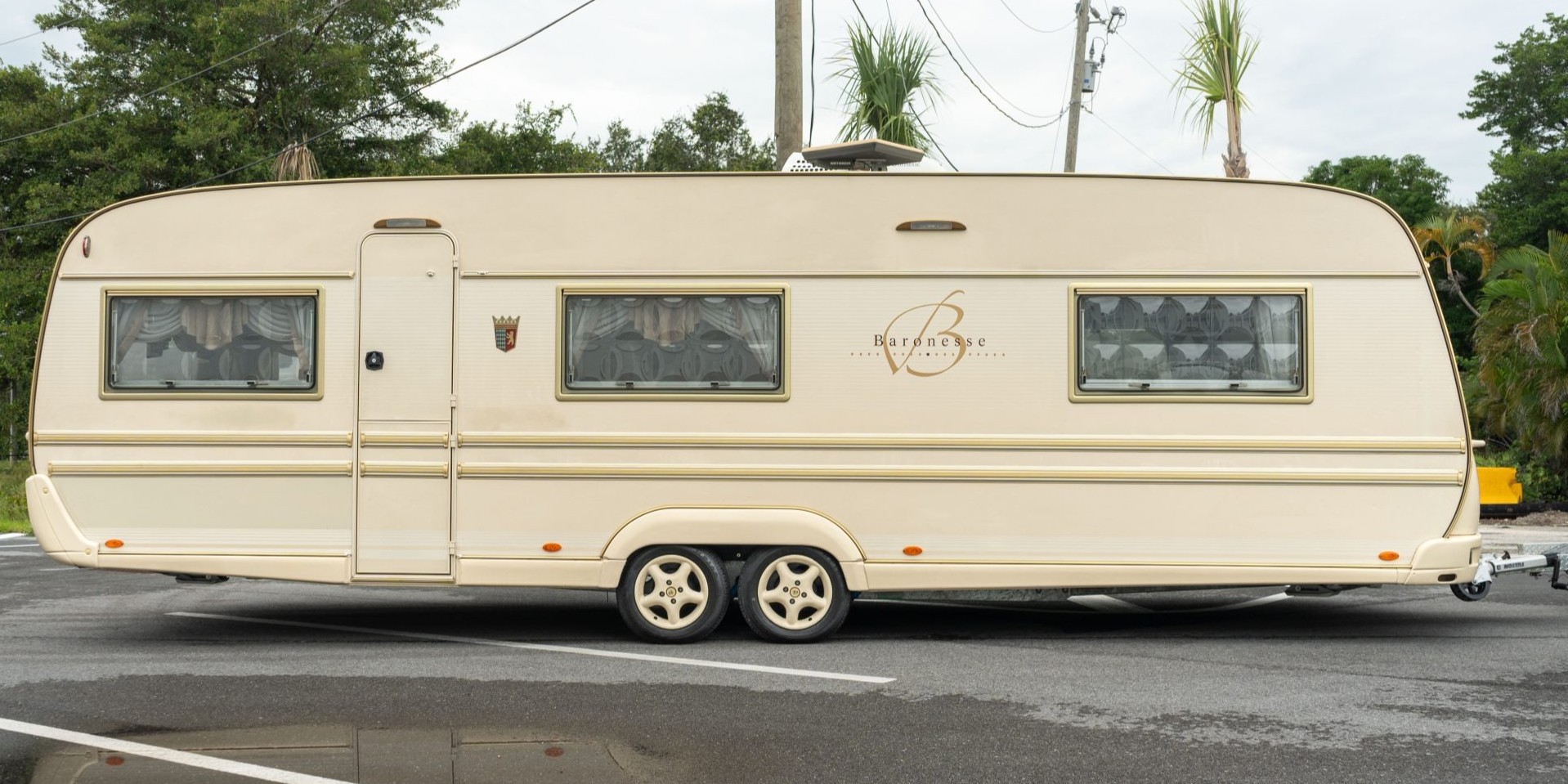
The above story of Romani families loving trailers like the Tabbert Baronesse is backed up by the book ‘Gypsy Jazz’ by Michael Dregni, which appears to be an in-depth look into the Reinhardt story. Coincidentally, I wrote about another Romani trailer earlier this month! As for this specific trailer, the seller states that they purchased the trailer from a member of the Reinhardt family in Germany and then imported it into America. It has appeared for sale on different websites by Bullet Motorsports, but now it has arrived on Bring A Trailer.
The 2002 Tabbert Baronesse 740 being offered for sale today is claimed to be one of the only examples in America. It’s also said to be one of the largest of the Baronesse line.
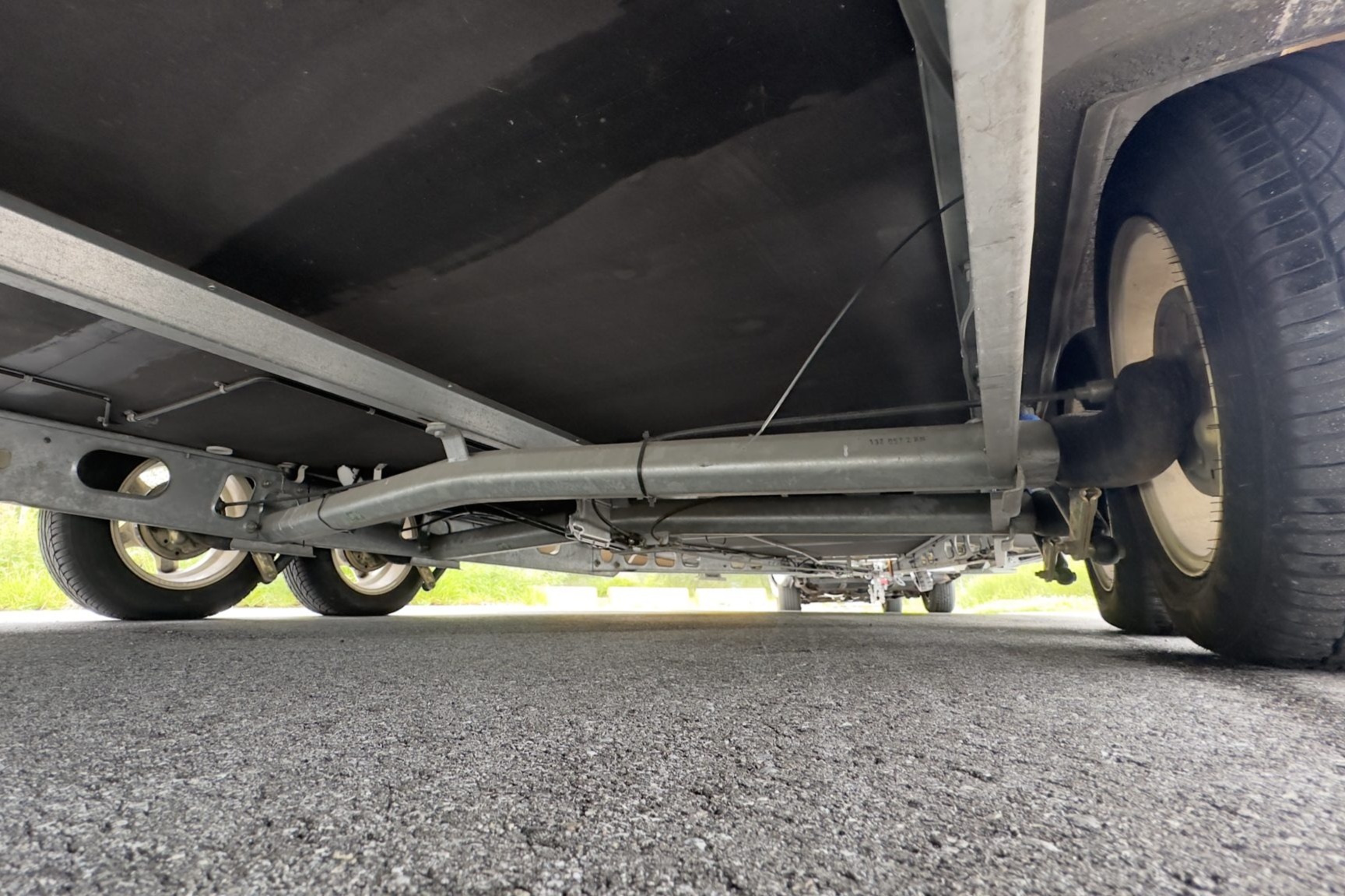
Sadly, due to the rather poor documentation out there about this trailer, I have not been able to find specifics about its build. But I did find a few interesting details. These trailers have AL-KO semi-trailing arm axles, hot-dip galvanized frames, aluminum siding, and were fitted standard with a PVC floor with a felt backing. Electricity was handled with a 220-volt system with a 12-volt secondary system.
On the outside, you’re looking at a surprisingly classic design for something from 2002, and it’s painted beige and trimmed in gold. It’s about the opposite of the Vickers Morecambe that I recently wrote about, in that it’s not absurdly flashy. The gold is a bit extra compared to a typical camper, but that’s about it.
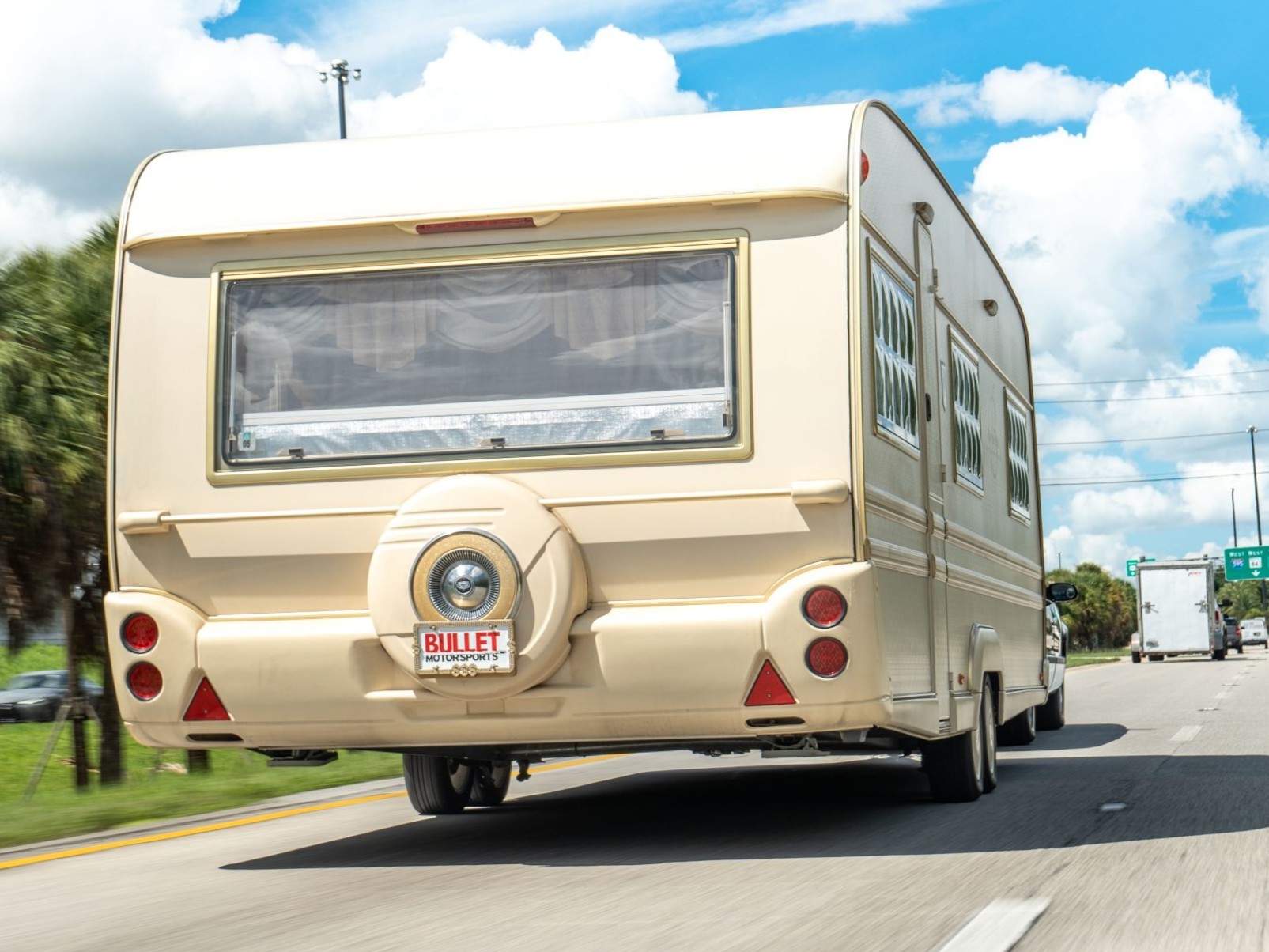
The seller states that many of the features of the camper were changed to comply with U.S. standards:
The camper was professionally shipped from Hamburg to Brunswick, GA, cleared through customs, and adapted to meet U.S. DOT regulations:
Gas lines removed, as they could not be certified under U.S. standards.
Electric furnace installed in place of the gas heater.
Electrical system converted from 220V to 110V.
Tail lights updated to U.S. specifications.
12V battery system added, allowing lighting to function both on- and off-grid.
Fridge retained, powered via an included 110/220V transformer and switchable to 12V when towing.Note: Most Manouche Gypsies traditionally do not cook inside their campers, preferring outdoor cooking under an awning. As such, the kitchen and appliances were seldom used.
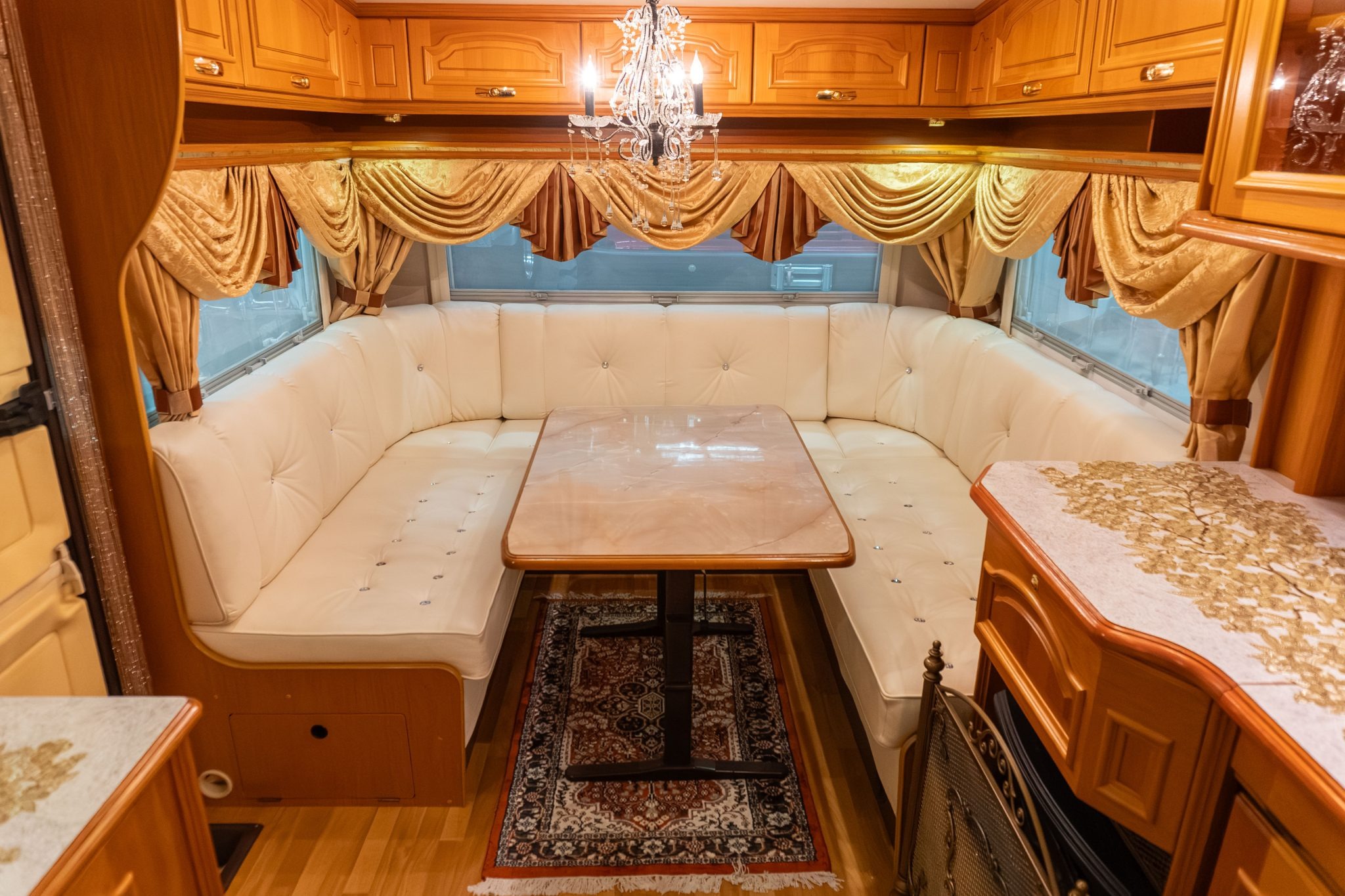
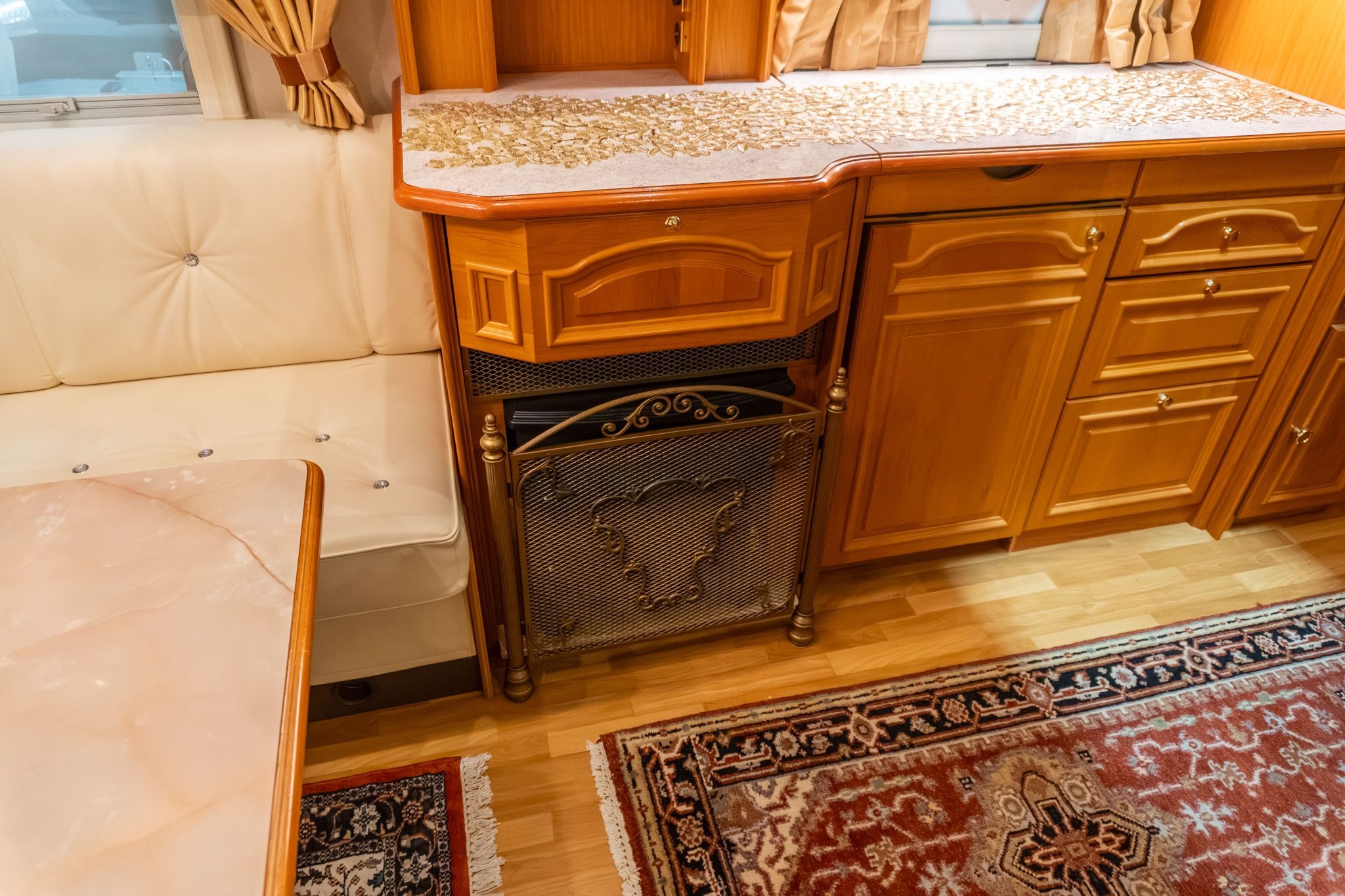
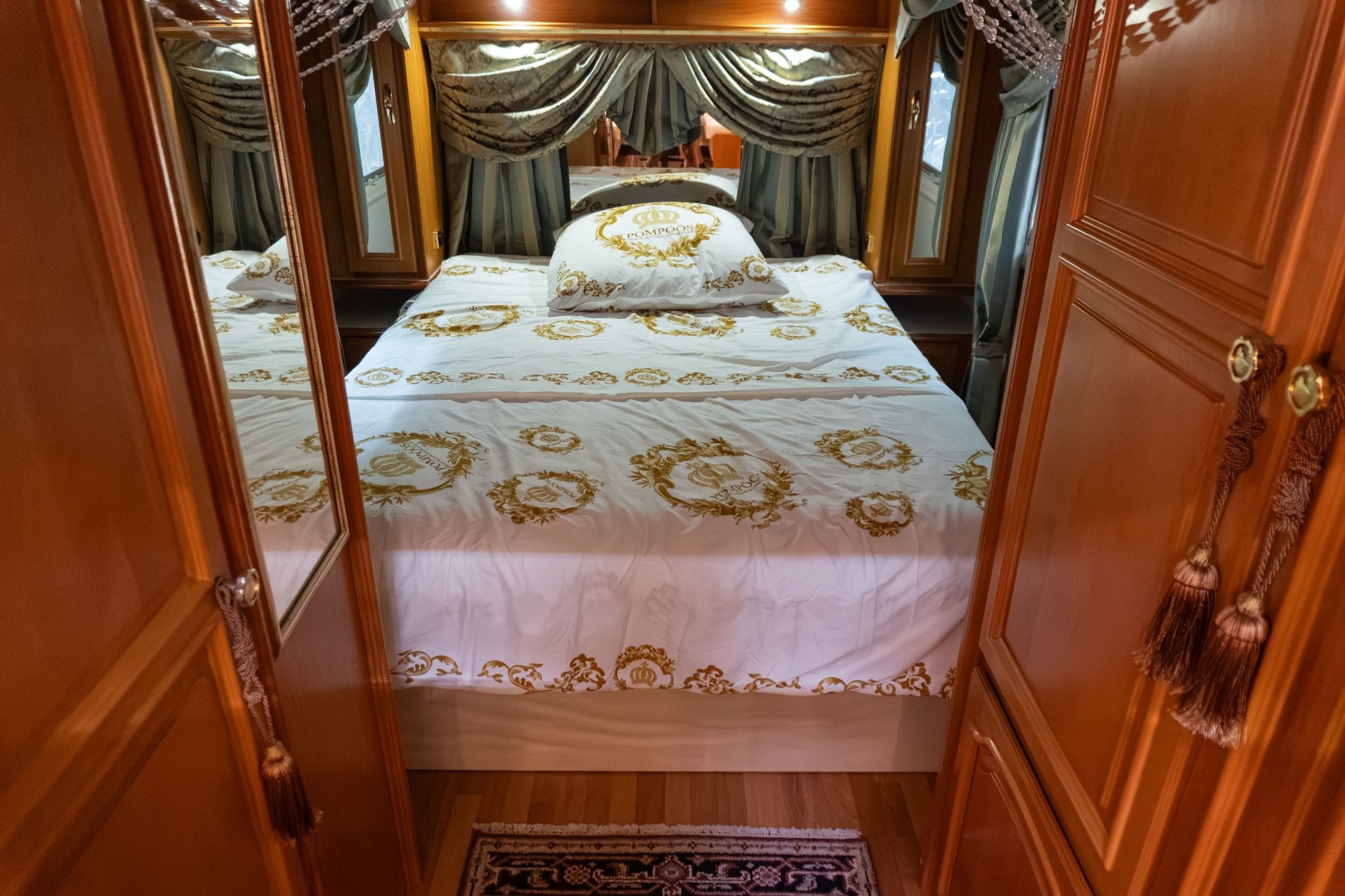
The interior is where things get pretty crazy here:
The trailer is laid out with a U-shaped convertible dinette at the front and a bedroom at the rear with a galley and a storage-converted lavatory in between. Amenities include an electric fireplace with a brass-effect decorative grille as well as a Dometic air-conditioner/heater, rooftop vents, and panoramic front windows.
Premium features consistent with Tabbert campers include raised-panel cabinetry, hardwood flooring, and custom touches such as swagged draperies, beaded door curtains, Persian-style area rugs, white leather upholstery, a marble tabletop, and a crystal chandelier.
Wood sliding doors with upper glass panes close off a rear bedroom with a queen-size bed as well as overhead and bed-side storage cabinets. The mirrored headboard, side windows, and ceiling feature swagged drapery treatments, the latter of which includes decorative brocade and crystal accents.
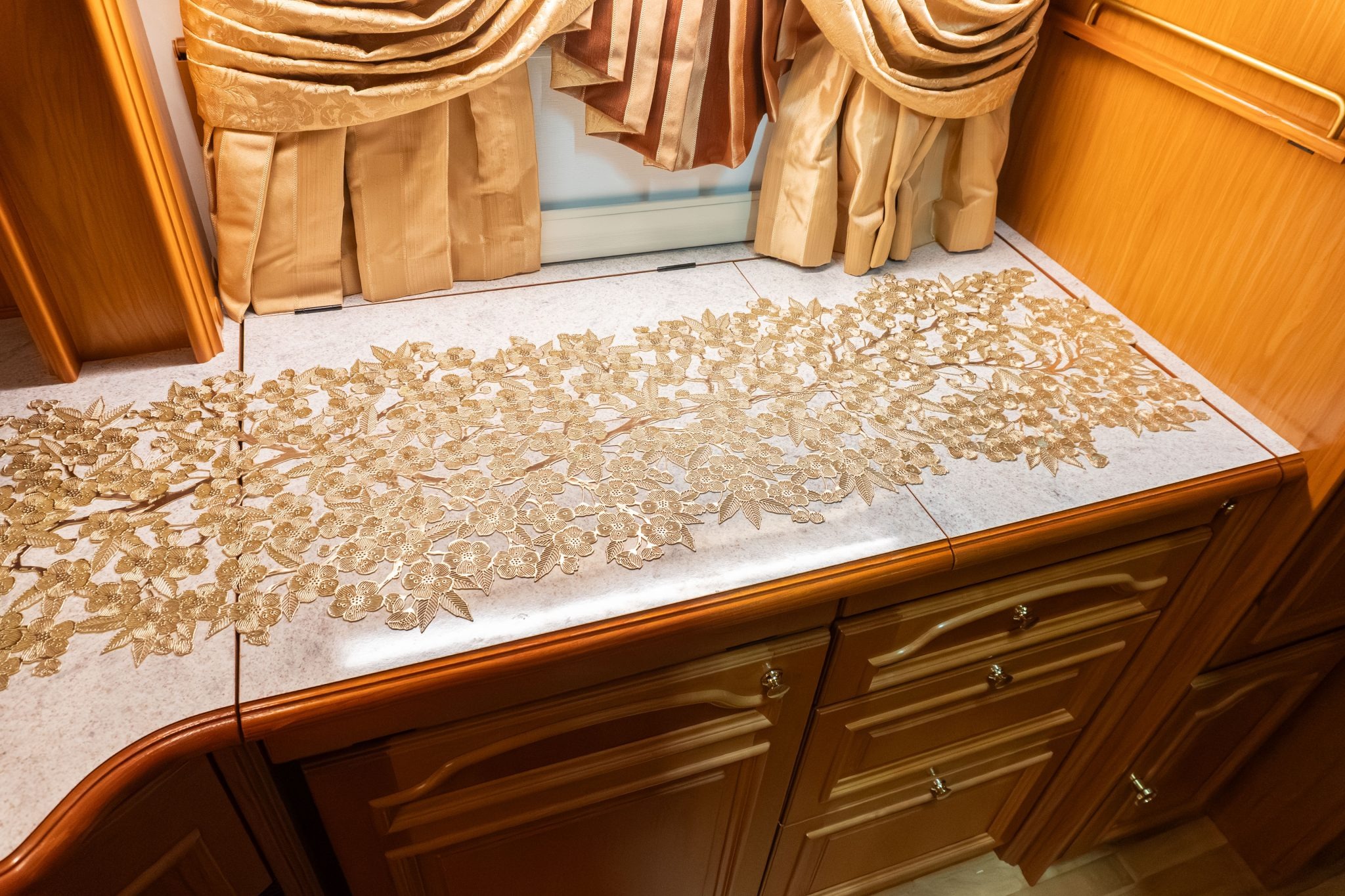
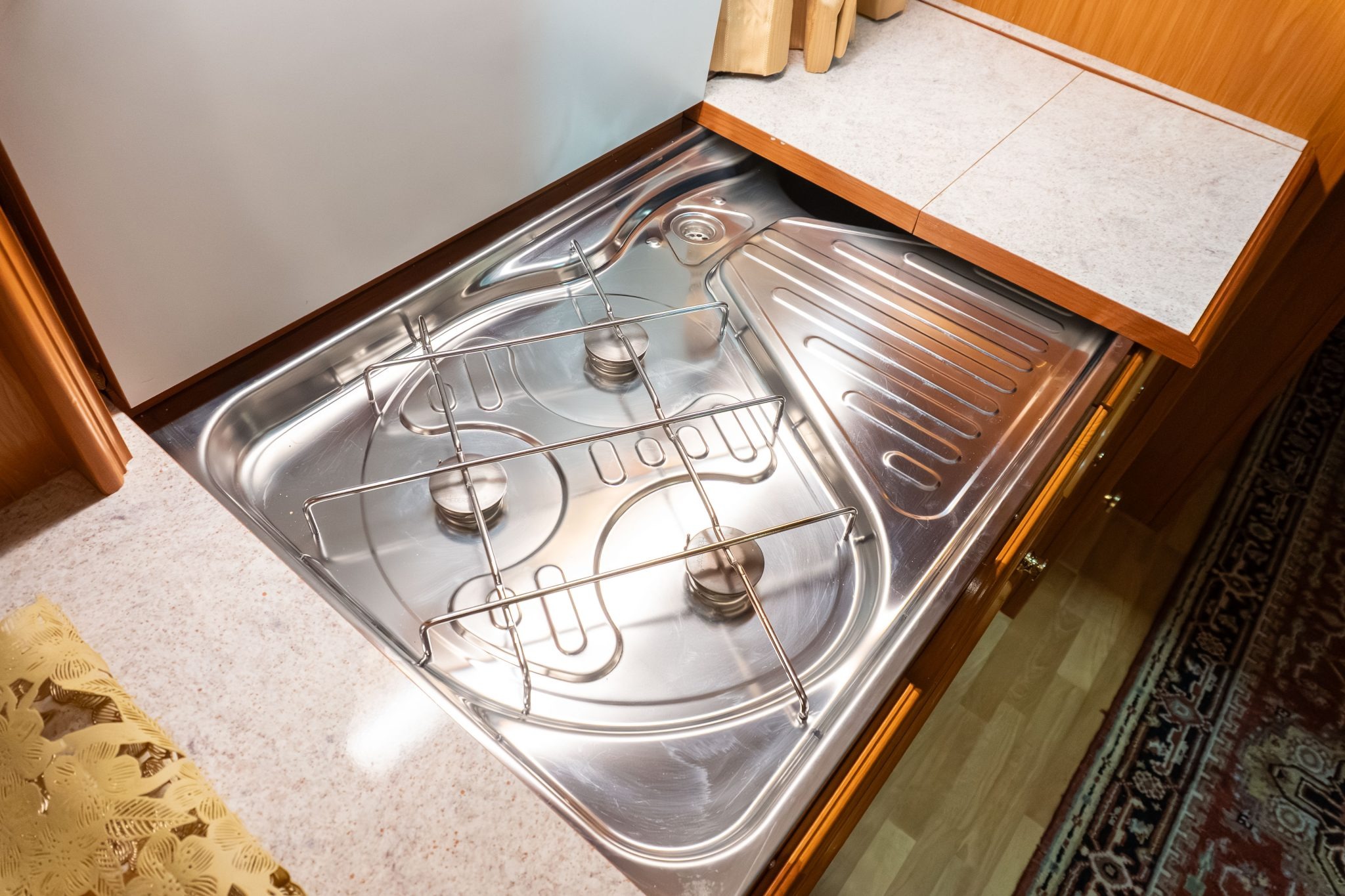
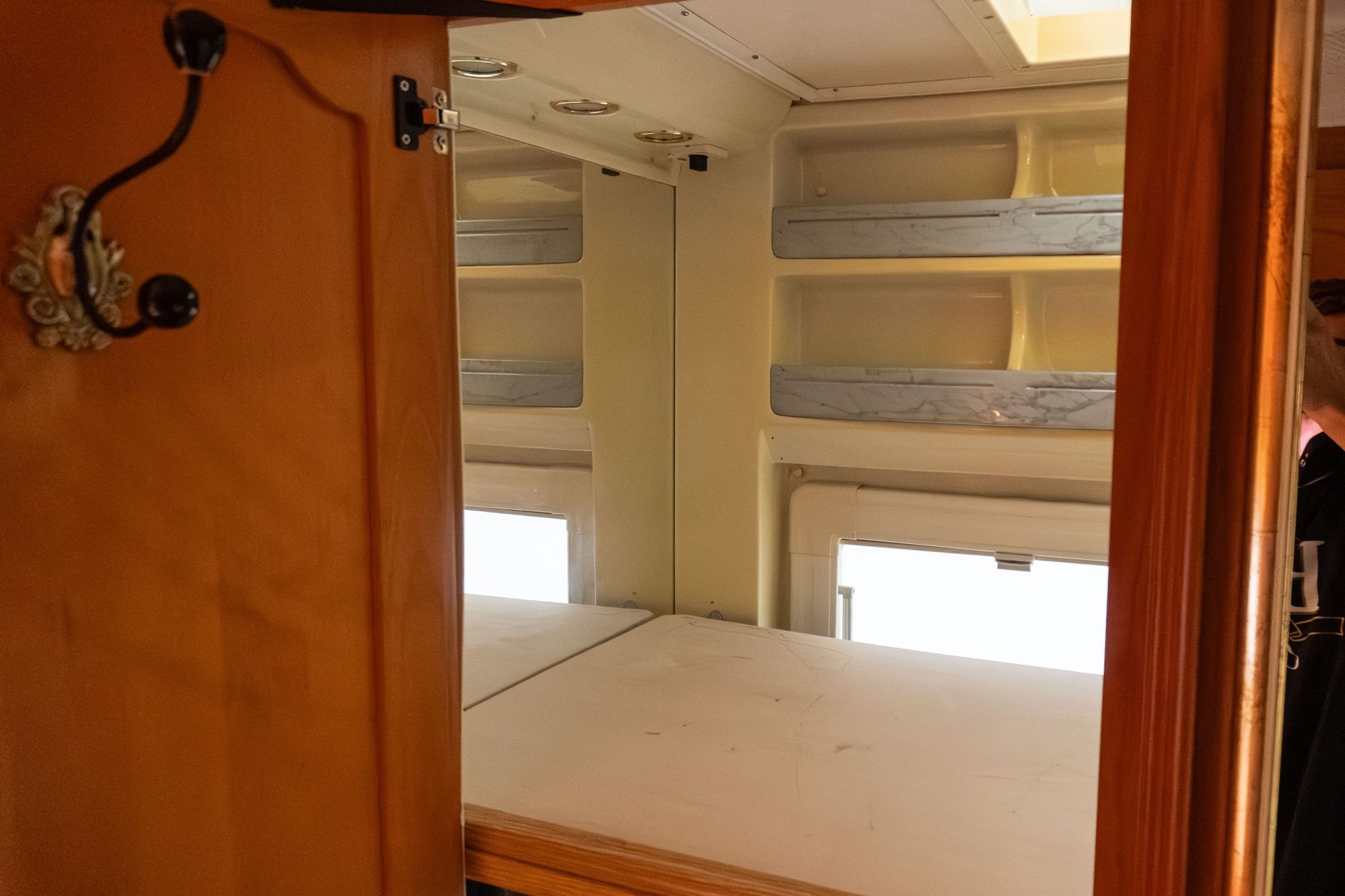
It’s noted that the Reinhardts apparently converted the wet bathroom into a storage closet (shown above). Likewise, it’s said that the Reinhardts likely didn’t use the interior cooking appliances much as, per tradition, they would likely cook outside. This is why the last Romani trailer that I featured didn’t even really have a proper kitchen.
The good news is that the appliances are present and can be activated for use. Likewise, the wet bath is intact under the storage shelving, so you can turn it back into a bathroom if you want to. Unfortunately, this trailer has no tanks of any kind. It’s designed to be parked at a place with shore power and a place to drain gray water. Honestly, it wouldn’t be too hard to fit your own tanks through DIY.
The trailer is said to weigh in the ballpark of 4,400 pounds, and it measures 30 feet long. Now, we get to the hauler.
The Car

Hitched to the front of the camper is a 1995 Cadillac Fleetwood Brougham. This is a weird choice because it’s nothing like the kind of car that would have hauled this thing in Germany. Yet, I can’t help but find myself amused at this thing. This version of Cadillac’s full-size luxury land yacht is based on the General Motors D-body, and its relatives include the Buick Roadmaster, the Oldsmobile Custom Cruiser, the Chevy Caprice, and Chevy Impala. The Fleetwood is notable for being Cadillac’s last big body-on-frame rear-wheel-drive sedan.
The inside of the Fleetwood is pretty great with maroon leather bench seats, power everything, and fake wood. It’s prime 1990s General Motors in there, and I dig it.

Perched under the hood of this one is an all-iron 5.7-liter LT1 V8 engine, a variant of a powerplant perhaps more famous for its inclusion in the Chevrolet Corvette. You’re looking at 260 horsepower and 330 lb-ft of torque here, and delivered with the smooth ride these old boats were known for. Power reaches the ground through a 4L60-E four-speed automatic.
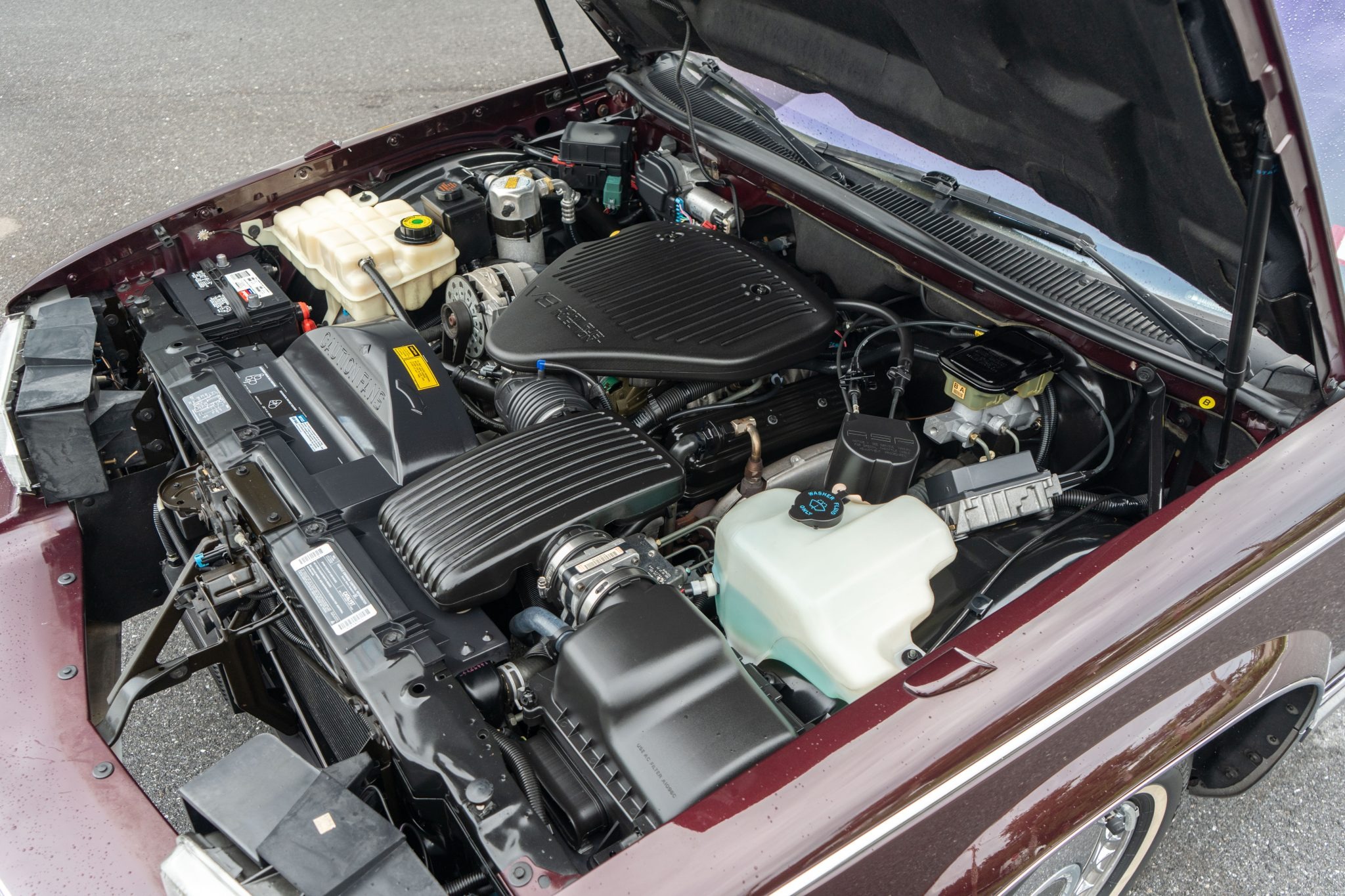
What’s neat about this Fleetwood is that it was supposedly ordered new with the optional trailering package (RPO V4P), which included an upgraded primary radiator fan, a secondary fan, a beefed-up radiator, upgraded suspension, and new gearing. This pumps towing capacity up to 7,000 pounds. But here’s where things get weird.
European trailers also have a different, more unfortunate-looking towbar than Americans have. To hitch the camper to the Cadillac, the Cadillac has a European-style tow ball slid into the American trailer hitch. Then, the wiring just hooks right up.
The Catch

While I was admiring the hitch setup, I noticed that the trailer hitch has a 1-1/4-inch to 2-inch adaptor on it. This doesn’t make sense to me because if this is equipped to tow 7,000 pounds, then it should have a two-inch hitch receiver. If you look deep into the photos, you’ll notice two things. The first is that the car has a mechanical radiator fan, which is a component of the factory trailering package that isn’t a component of the standard car.
But then, you’ll look at photo 499 (below) and see an aftermarket Curt Class 2 hitch on there with a weight limit of 3,500 pounds and a tongue weight of 350 pounds. So, this car does have the upgraded towing package, which puts its limit at 7,000 pounds, but it can’t actually tow the weight because someone installed an undersized trailer hitch.
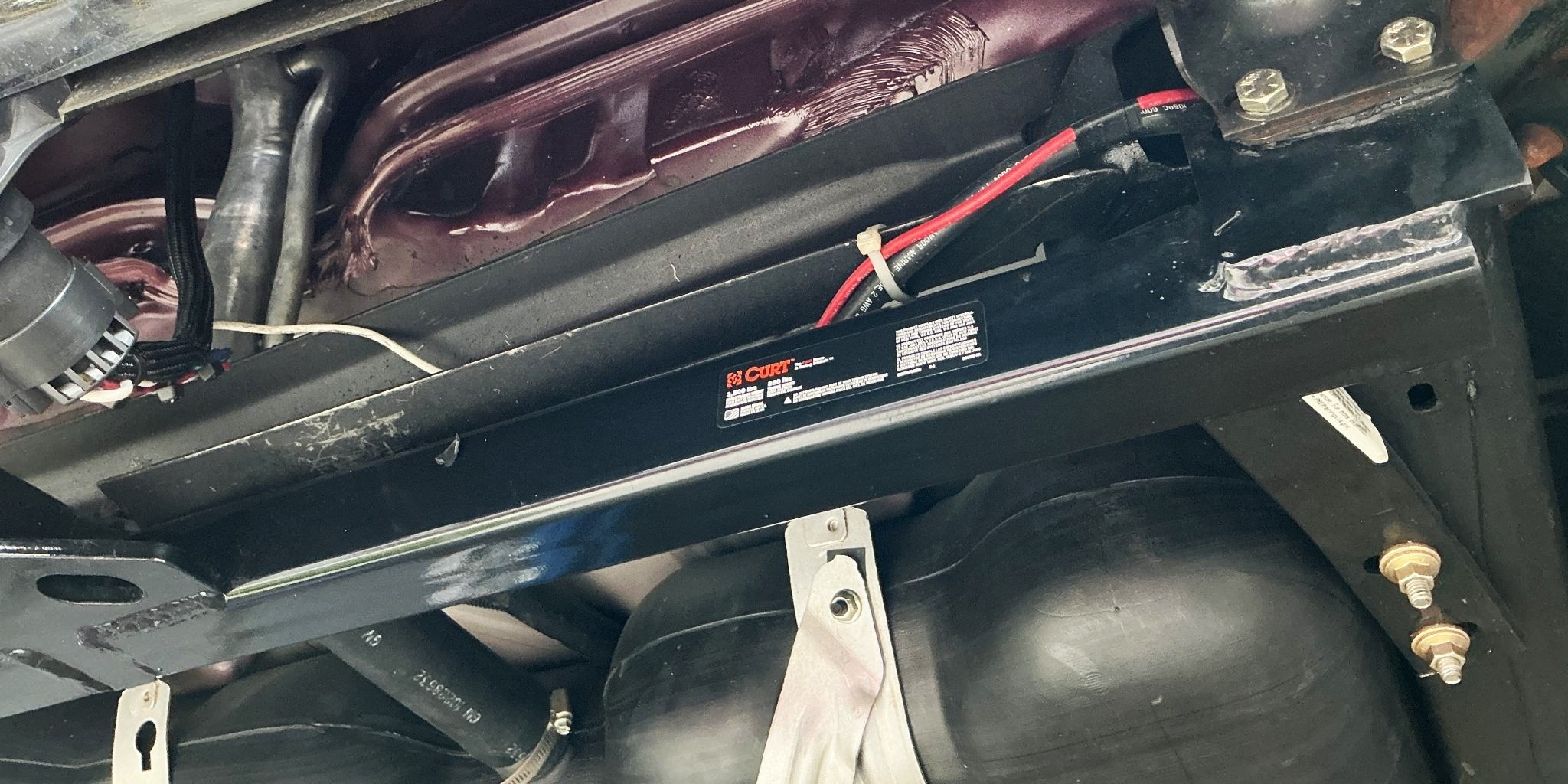
This is important because the base weight of this trailer is around 1,700 kg, or 3,747 pounds. This is based on other examples of the Baronesse 740 that I found for sale in Europe. That means this trailer hitch could be overloaded by 200 pounds with nothing in the trailer. Now, deleting the propane system has removed some weight. So, let’s be generous and say that it weighs 3,500 pounds. That would mean the hitch is exactly at its limit and overloaded the second you put anything in the trailer. The gross weight of these trailers is 2,000 kg, or 4,409 pounds, which is 900 pounds over this hitch’s limit.
But these are guesses at best, since the only true way to determine trailer weight is by going to a scale.
Thankfully, due to the weight distribution of European campers, this setup is within tongue weight ratings of the hitch. However, you should not be overweight on even one metric when it comes to towing.
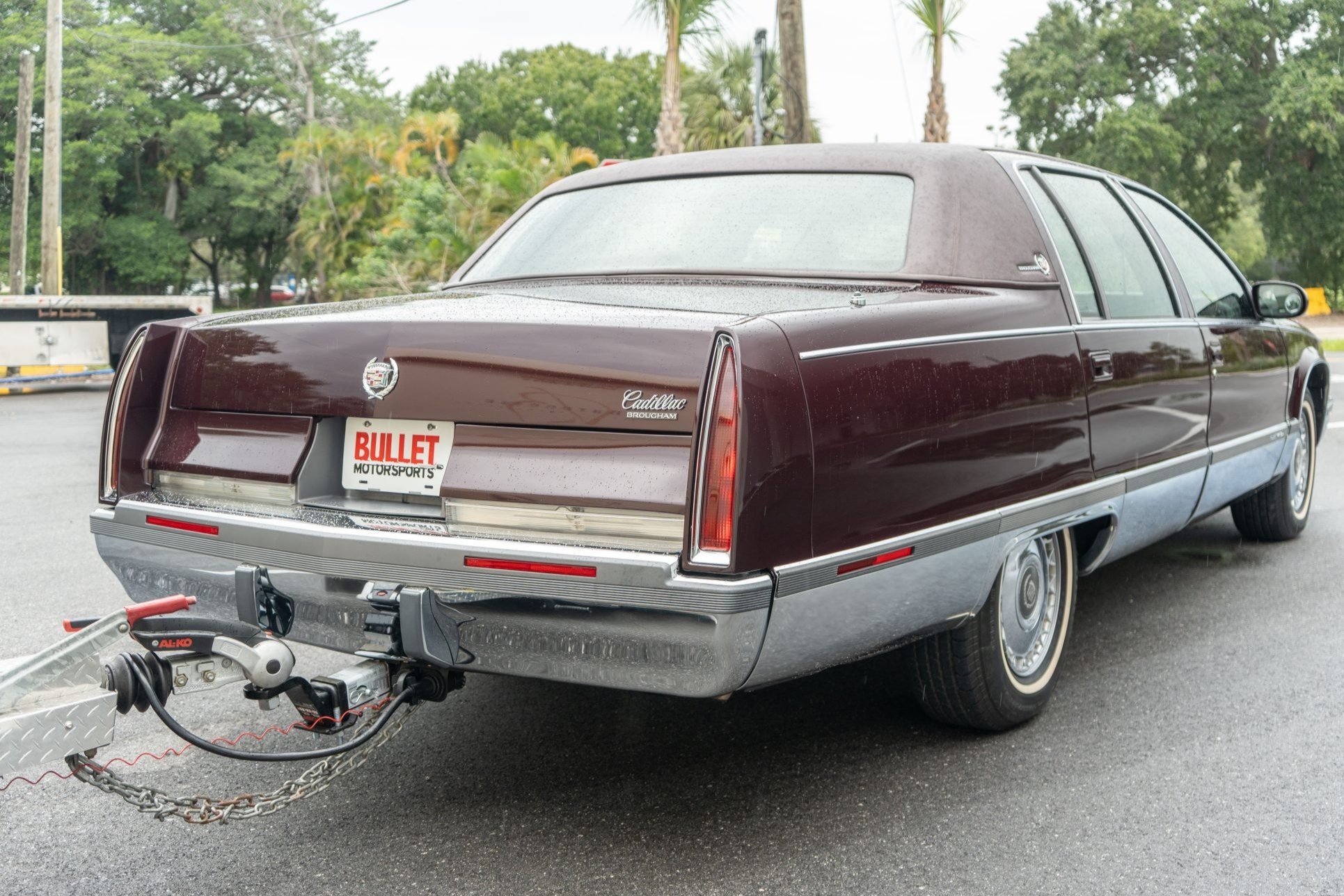
When I asked the selling dealership about this, my question was countered with the explanation that the car has towed the trailer for 5,000 miles like this. Admittedly, I’m not at all a fan of that answer, so I’ll give you a better one. If you buy this, the first thing you should do is dump that underrated hitch. That’s an easy fix for my complaint.
Okay, now let’s get back to the fun stuff.
One big highlight is that the car has only 11,000 miles on its odometer, which is pretty neat! It’s said that the trailer and the Cadillac have driven about 5,000 miles together, including one trip to Nashville, Tennessee. So the big Caddy isn’t just for show!
A Fun Way To Ride

This is honestly a weird pairing. The camper looks like something out of the 1970s or the 1980s, but it was actually built in 2002. That makes it younger than the car towing it. I’m not even sure what would be the proper car to hitch up to this trailer, but the visuals of a big Caddy towing a German camper are pretty awesome to me.
Sadly, if you’re looking for just the Cadillac or just the camper, you’re out of luck. They’re being sold as a pair. As of publishing, the listing is at $7,600 with four days to go on Bring A Trailer.
I love how this pairing tickles two of my soft spots. I absolutely adore this era of General Motors, when it built massive cruise liners of cars with huge V8 engines and benches as comfortable as a sofa. Likewise, I love looking at and learning about weird campers, and this is definitely a weird camper. I hope whoever wins this auction keeps the two together, because what a wild sight it must be to see this going down the road.
Top photo: Bullet Motorsports via BAT









In a similar line, they don’t make that B Body (Caprice/Roadmaster) wagon Class III hitches any more, so I had to build one from a kit. https://kds-performance.com/91-96-gm-wagon-diy-hitch-140/
I’d love to pull into Green Park at the Sebring infield for the 12-hour IMSA race next year with that setup. Probably wouldn’t like quite as nice upon leaving though.
If I ever get a trailer, I’d err on the smaller side and this is the tow vehicle I’d go with. I already have the ’95 Fleetwood and it would be well worth it to have a custom class 3 hitch built correctly. Those D-bodies are nice places to sit and soak up the miles, maybe something to look into in another decade when retirement starts to appear on the horizon.
The dining area in that trailer is way fancier than the one in my condo. I dig it. The Caddy is nice too. Not my kind of car, but that appears to be a fine example.
A friend of mine in High school use to tow her horses with her daddy’s town car. she somehow kept wrecking oil pans on it. daddy was part of the Rite Aid founding family so there was money.
Classic cars for towing these in Europe used to be big, non-luxury sedans/wagons – think Opel Omega, Renault Safrane, Ford Scorpio. Current favorites include the Volvo XC60, Kia Sorento, and Volkswagen Touareg.
Travellers traditttionally prefer Mercedesses, the bigger the better, Typically one generation old.
Maybe I stayed at the wrong campgrounds… Renault 25s and Opel Rekords everywhere. Lovely for a young carspotter.
Plum interior?? Sign me up for just the Caddy!
Seller, this Cadillac is tip top!
<Back of Cadillac falls off>
What the f… am I going to do with a Cadillac with no wheels?
I worked on the closely related B platform Chevy cars (Caprice/ Impala SS) in 1994-1995 when they were new. I owned several and worked on several dozen at my own shop later.
The mechanical fan tow package cars had 250hp, not 260. That was the dual electric fan LT1 B/D cars. The RPO V4P tow package should include a 3.42 rear gear ratio, a big improvement for towing over the stock 2.56 or optional 2.93 (brougham) rear gear.
Proper class 3 hitches were available from Curt, Drawtite and others. Find one. Make sure those trailer brakes work right and that your tongue weight is appropriate for your speed.
…because everything works until it doesn’t.
I had one of those 5K hitches on my ’95 and used it to tow 5,000 lb trailers. That dinky 3500 lb hitch, lack of weight distribution equipment and adapter for that large, heavy sail of a trailer are a recipe for problems at US highway speeds, particularly in crosswinds, down long grades, panic braking, any kind of emergency maneuvers etc.
Someone needs to put that trailer on a truck scale, fully loaded as you’d use it and see what the axle and tongue loads are. I would bet you it’s well over 3500 lbs with all that heavy ornate stuff inside, let alone once you put fresh, gray and black water tanks and a propane system back in along with all the usual camping gear, equipment, batteries, dishes, etc.
You’re not supposed to carry a plastic bag full of gasoline in your trunk, man. “Well, I’ve been doing it for months, so it’s fine.”
Smartass comments aside, I dig the camper.
I am getting big Seinfeld vibes from both the car and trailer.
Looks like something Kramer would be towing back to NY after being ousted from
Dell Boca Vista…
Jerry’s parents towed an Airstream with theirs briefly, when they decided their condo was “too much house”
I recall the brochure that came with the car also depicted one pulling an Airstream, but a much bigger and fancier model than what Morty & Helen downsized to
LOL. I just saw that episode. Still cracks me up.
They are some of the most realistically written “parent” characters in any sitcom, down to their bickering over opening a package of Chips Ahoy
I love the one where Uncle Leo gets busted for stealing.
And then Jerry’s Mom talks about having to steal batteries because Morty forgets to do it.
I’m an old man, I’m confused
OTOH I have seen probably 3-4 older women getting arrested for stealing meat from the stores here in the last 2 years.
I don’t know if they are kleptos or not.
I realize how expensive groceries are these days.
Either way, it’s always a sad sight to witness.
I used to work at a nonprofit organization where the executive director was paid well into the six figures, and this was 15 years ago when six figures still meant a little something, and his wife was making similar in an administrative role with the school district. He was kicked out his Baptist church for “shopping” in their food pantry when no one was around. To make matters worse, his wife had started the food pantry and he used to routinely use it as an anecdote when making sales pitches to prospective donors.
He was a compulsive hoarder, house, office, and car were piled full of garbage, and he would do things like steal extra soap off hotel maids’ carts in hallways or bring his lawnmower gas cans to the company gas pump to fill for free.
Also, his father was a Baptist minister and he originally started studying for the ministry, before switching majors to Soviet relations
Everyone has their own taste, and a gypsy caravan is not exactly mainstream.
That trailer does look like it will last many decades longer than the typical American assembly-line slop, and kudos to the detailers who made the car and the trailer both as clean as new.
Personally, though, I couldn’t spend more than about two minutes inside that gaudy trailer.
Agreed. It’s cool, but not my style. Honestly, if I ever get a camper, I’d probably just want some bunk space, a table, and an awning. A basic popup would probably be enough.
But I suppose I also have to recognize that this is a Romani trailer and was likely built to serve as an actual home. Still not my style, but I would certainly have more creature comforts built-in to a rolling home than I would for a camper I’d use a handful of times per year.
“it will last many decades longer than the typical American assembly-line slop.”
Airstream would like to have a word with you…
Airstream is not typical, it is the exception.